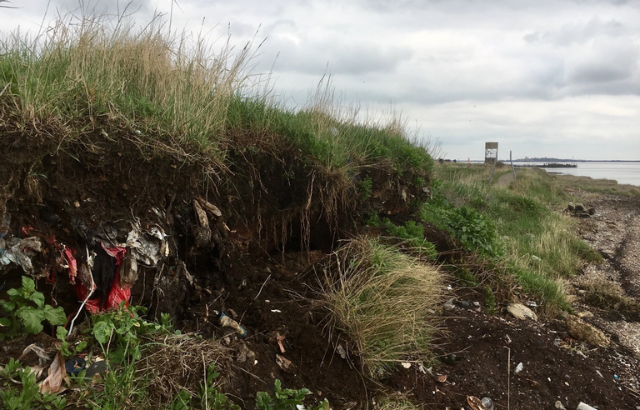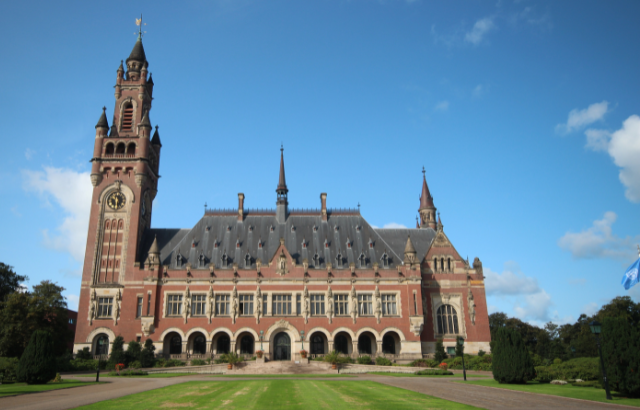Do scientists and artists speak different languages?
Queen Mary University of London hosted The Two Cultures Debate on the relationship between the arts and science.

Almost 60 years after CP Snow first described a lack of understanding between the arts and sciences, Queen Mary hosted a debate on this topic as part of its Arts and Culture programme for autumn 2018, STEAM Ahead.
Do scientists speak a different language to that of artists? Has art grown too obscure and could it ever be instructive to scientific advancement?
To answer these questions Dr Tristram Hunt (Director, Victoria and Albert Museum) and Sir Paul Nurse (Director, Francis Crick Institute) went head-to-head in a special debate which was recorded for BBC Radio Three’s Free Thinking programme. The event was hosted by Dr Shahidha Bari, lead for Arts and Culture at Queen Mary.
Exaggerated divisions
Both panellists agreed that the divisions between the arts and science have been exaggerated over the years since CP Snow coined the term ‘two cultures’. “I remember it at school, it was a big thing. I think on reflection, it shows CP Snow’s insecurity. I think it was overblown,” said Sir Paul Nurse.
“I belong to an institution which brought art and science together. There was no division between these two until 1899. I would like to add, on record, that this is when science split from us,” added Dr Tristram Hunt.
Dr Hunt paid tribute to Queen Mary’s tradition of supporting arts and humanities but added that he understood why at times it may be that science has received disproportionate funding in the past. “I completely understand the costs but the smart money is where there is fusion between both science and the arts,” he said. Dr Hunt gave the iPhone as an example of a creative product resulting from of a fusion between both science and the arts.
Sir Paul Nurse agreed but argued that is it not just the arts and humanities that contribute to culture in society. “The humanities and arts do need support, there is an imbalance. That said, we in science also contribute to culture and society. Interdisciplinary work is where exciting things happen and we should support these activities,” he said.
Private funding – a thorny issue?
During the debate Dr Bari asked the panel about their views on private funding for both science and the arts. Dr Hunt said: “We value designers and creators as well as private enterprise. We have never had any embarrassment about that. We couldn’t do what we do at the V&A without commercial support.”
Sir Paul Nurse added that universities in particular had to be cautious when it came to private funding. “We have to be careful when it comes to commercial investments. Such funding can separate research communities,” he said.
Barriers to arts and science
The panel were asked about potential barriers to opening up arts and science to the wider population. Sir Paul Nurse stated that formalised departments had been abolished in the Crick Institute to “avoid barriers and turf wars.”
Dr Hunt argued that the arts should be open and accessible to all. “There shouldn’t be anything which deters people. We want to break down every barrier we can to welcome people,” he said.
Reflecting on the so-called ‘metropolitan elite’ Sir Paul Nurse pointed to jargon as the key which has led to confusion. “There can be obscurity when it comes to both science and the arts, they can be tough to understand especially when there is jargon which makes it remote.”
The future looks bright
The debate covered diverse topics including identity politics, gender and climate change. The final point of discussion was the role of social media and new technology. Sir Paul Nurse argued that whilst access to information was “a great thing”, there needed to be some level of quality control. “Where is the editorial control? Quality control?,” he asked.
Dr Hunt agreed and believes that current developments and future evolutions in communication and technology pose challenges as well as opportunities. “A fusion between arts and science excites me. That said, social media makes the role of trusted institutions more important than ever. In this era of so-called ‘fake news’ people need trusted sources of information,” he said.
About Arts and Culture at Queen Mary
Queen Mary launched its Arts and Culture strategy in November 2017 with the aim of developing the university as a world-leading centre of excellence in arts and culture within higher education. STEAM Ahead follows a series of successful events which took place in June 2018.
Queen Mary is a major contributor to London’s diverse artistic and cultural landscape, and has built strong relationships with its local, national and international audiences through the arts.
More information
- The Two Cultures Debate will be broadcast on BBC Radio Three’s Free Thinking programme at 10:00pm on Wednesday 5 December.
- Find out more about Arts and Culture at Queen Mary.
Related items

10 December 2024

10 December 2024
For media information, contact:
